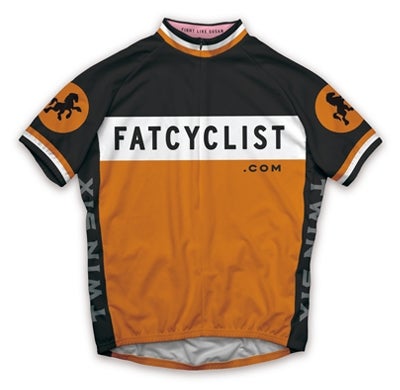How To Improve Your Triathlon Blog

Fatcyclist.com blogger Elden “Fatty” Nelson is a bit of a celebrity in the cycling blog world, with more than 18,000 Twitter followers, his own line of Twin Six apparel and a published book of his best writing. Although he started his blog in 2005 as a self-humiliation tactic to lose weight, Fatcyclist.com quickly morphed into stories about riding, fake cycling news and helpful bike tips. After losing his late wife Susan to breast cancer in 2009, he’s also used his site for good, raising a lot of money for the LiveStrong Foundation through contests and fundraising rides.
At heart, Nelson is a road cyclist who doesn’t fully understand the appeal of multi-sport events (he once called swimming “mind-blowingly awful” and running “pure misery”), but he has given a few triathlons a shot, including Ironman St. George in 2010—his first triathlon ever—and an Xterra race last year. His appreciation for triathletes has grown over the years, heightened recently when falling in love with his new speedy Specialized Shiv. Although he doesn’t plan on doing an Ironman again, he will be riding his Shiv as part of a relay in the upcoming LeadmanTri Bend 250 on September 22. (Doing the race? You can challenge him in the “Faster Than Fatty?” competition here.)
If you have your own triathlon blog, or plan to start one, follow some of Fatty’s tips on how to write a blog people actually want to read.
• Write for your friends. “When I started the blog I had a few close friends, and I was really writing the blog for them,” Nelson says. “Even now, I keep those close friends of mine in mind when I write. If you’re writing this for the group you ride with or the people you see most at races and they enjoy it, chances are people you’ve never met but who also race will also enjoy it.”
• Go beyond the numbers. “Getting statistics and writing a log of the dry facts about what happened are important aspects of the story,” Nelson says. “But if you haven’t conveyed how you felt—what it felt like to pass someone or the agony you felt when you DNFed—you don’t have something that anyone else wants to read. Because only you are interested in the numbers.”
• Include the drama. “The starts and finishes are written for you,” Nelson says. “What happens during the drama is up to you. Triathlon is uniquely suited to writing an interesting three-part drama. It’s already there, you just have to remember the emotion. If you’ve read any of my race reports, I talk a bit about corners and the gravel on the road, but I’m almost always talking about what’s in my head. In the absence of a crash or something truly dramatic happening—like throwing up or piking gravel out of your thigh—the drama happens inside your head. That can be very interesting.”
• Get personal, to a point. “There are some things that are there for me and some things that are for the world,” Nelson says. “Everyone has to decide where that border is. If you want other people to be interested, you have to perhaps stretch the envelope of what you are comfortable sharing and you have to talk about your high highs and be honest about them. Get a little more comfortable with bragging than you might normally be.”
• Make fun of yourself. “You also have to be ready to self-deprecate when you have a bad moment, or when you were angry and felt foolish for being angry and did something stupid,” Nelson says. “In my case, I blew three corners and was a terrible navigator in last week’s race [the Utah Half relay]. I found it extremely embarrassing that I was so terrible at understanding directions from the volunteers. You have to be willing to say, ‘I was foolish and not good at noticing directions.’ You have to be willing to sometimes be the fool, or the bad guy even. Admit the mistake, own the mistake and commit to learning from the mistake.”
Follow Nelson on Twitter @fatcyclist and his blog, Fatcyclist.com.
RELATED – Food For Thought: Rebeccah And Laurel Wassner’s Nutrition Blog